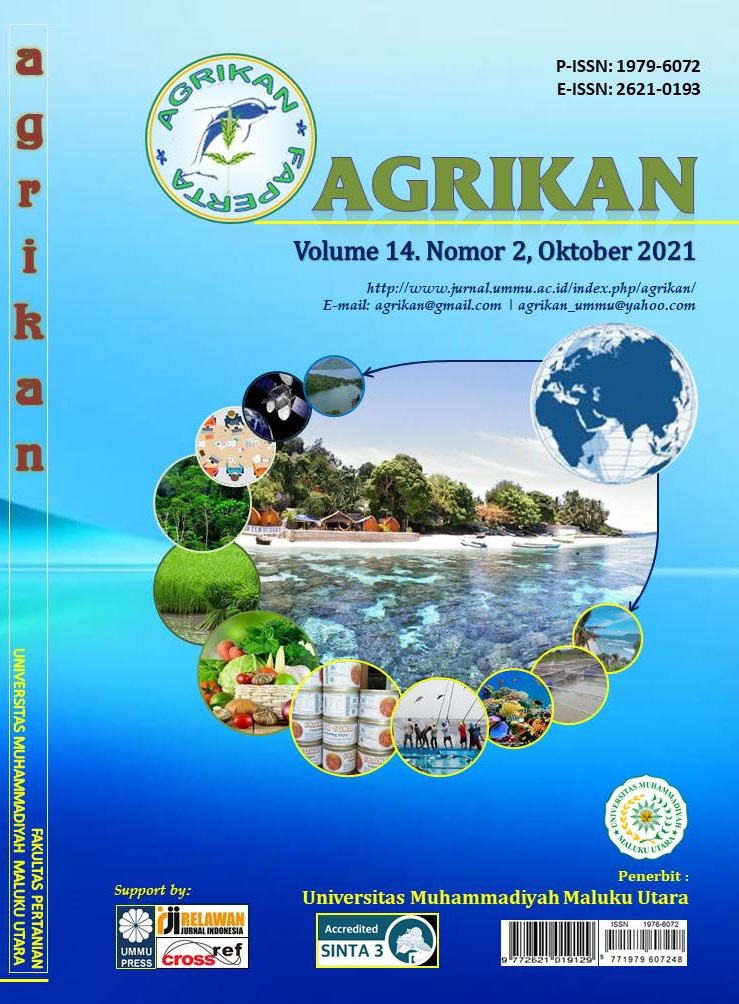Growth and Survival of Tilapia (Oreochromis niloticus) in the UPTD of Freshwater Cultivation
DOI:
https://doi.org/10.52046/agrikan.v14i2.863Keywords:
Growth, Survival, Tilapia, Oreochromis niloticusAbstract
Tilapia (Oreochromis niloticus) is one type of freshwater fish that is popular among the public. Because of its popularity, tilapia has promising business prospects. The reason tilapia (Oreochromis niloticus) is widely kept or cultivated is because tilapia has the prospect of fast growth, is resistant to disease and is widely used as fish for consumption other than tilapia, so the need for tilapia (Oreochromis niloticus) is increasing and not even in public health centers. able to meet the needs of the community. The purpose of this study was to calculate absolute growth, daily growth and survival of tilapia (Oreochromis niloticus). The research method is an experimental treatment with 3 treatments and tested with a Completely Randomized Design (CRD). The research results achieved include the absolute growth of 2-3 cm in length, while the weight / weight is 0.16-0.24 grams. Daily Growth 2.94-3.32 grams and Survival 90-100%. While the results of the ANOVA test value Fcount 5.67) <Ftable (6.94) so that feeding with different doses did not affect the growth and survival of Tilapia (Oreochromis niloticus).
Downloads
Published
Issue
Section
License
Copyright (c) 2021 John Etry Ririhena, Elizabeth Miklen Palinussa

This work is licensed under a Creative Commons Attribution 4.0 International License.

This work is licensed under a Creative Commons Attribution 4.0 International License.













